The huge surge in electoral participation is arguably the single most important and positive message to come out of the German election yesterday. Contrary to the Vice-President’s caricature at Munich, democracy is alive and well. There is no silent majority resentfully excluded from public life by a repressive liberal elite. The resentful minority speaks through the electoral system and it does so vociferously by way of the AfD, who gained most but failed to break above 21 percent. What Germany’s rather sophisticated democracy prevents that minority from doing is dominating national government, in the way that MAGA has been able to do in the USA.
Source: FT
The AfD gained votes from all parties, above all Merz’s CDU, the sinking ship of the FDP and the lack luster SPD under Scholz. But the largest chunk of new votes for the AfD came from 1.8 m people who had previously not voted. It may be ugly, but this is exactly how democracy should function.
Source: Tagesschau
The other parties that mobilized a large chunk of non-voters were the CDU and Wagenknecht’s movement.
When we look at the regional distribution of votes, maps can be misleading. Germany’s is a multi-party system so maps showing the “leading party” in a particular area do not mean what red-blue maps of the US would mean. Coming first in a constituency in Germany does not mean you got 51% of the vote. It just means you came first. You can come first with less than 20 percent of the vote. There are few if any districts in Germany where one party commands 51 percent of the vote.
In its strongest electoral districts the AfD scores 44-47 percent of the vote, short of a majority. In its strongest states it scores 37 %.
However, in terms of the modern German political system, the AfD’s vote in the East German states is stronger in percentage terms than that for any other political party in any other region of the country. It has regional dominance that approximates that which the CDU/SPD once had in the old West Germany. The only party that comes close to the AfD’s position in Saxony today, is the CSU (the sister party of the national CDU), which still remains hegemonic in Bavaria, though it too no longer commands the huge majorities it once did. Franz-Joseph Strauss, the godfather of old-school Bavarian politics, used to boast that there is “nothing to the right of us”. That is no longer true. The AfD scores 17 percent even in the blackest CSU strong holds (black because of the CSU’s clerical associations in deeply Catholic areas).
It isn’t fair to say, therefore, that the German political landscape is fragmenting. In East Germany the AfD is consolidating its claim to be the leading party.
Another way of viewing this is to look at socio-economic correlates. This confirms the AfD’s claim to represent what might once have been called the “popular classes” in Germany. The AfD gained relatively most in the poorer parts of Germany, especially those in the former East. By contrast, the SPD, once the workers’ party, suffered its worst losses in poorer electoral districts and did relatively better in more affluent parts of the country.
If we use a crude class analytic based on occupation we see a profound realignment in socio-economic affiliation.
The AfD is far in the lead amongst voters who identify themselves as “Arbeiter” (workers). Its cores well amongst Angestellte (white collar workers). It also does well amongst Selbststaendige i.e. self-employed. It does surprisingly bad amongst the retired (Renter) and dominates the unemployed vote (Arbeitslose).
Compared to previous elections we can see a marked shift amongst “workers” from the CDU/SPD to the AfD.
As the German TV analysts casually remarked yesterday, it is worth remembering that “workers” now account for only 10 percent of all voters. So marginalized are they that they don’t even figure in the headline of the relevant data tab.
What matters is how white-collar, salaried workers and the self-employed vote, and pensioners ….
The most significant dividing line in the German election other than region is arguably by age. A remarkable 40 percent of all German voters are aged over 60. 57 percent are over the age of 50. Only 14.5 percent are under the age of thirty! New voters account for only 3.4 percent of the electorate.
Young people voted above all for the parties that are marginalized in Germany’s political system, the AfD and Die Linke.
By contrast, 43 percent of those old enough to remember Konrad Adenauer voted for the CDU.
The SPD under Scholz scored twice the shares of votes amongst pensioners as it did amongst workers.
And then there is gender. John Burn-Murdoch has updated his excellent graphic on the global gender polarization
Incorporating the data from the latest German poll, shows young German men swinging slightly back to the center, but young German women continuing to migrate strongly to the left, now by a 30 point margin. As John confirmed to me in personal communication, this divergence is driven above all by Die Linke’s surge.
A vote for the Greens/Die Linke in this election was a vote for vigorous and unapologetic resistance to racism and the defense of decent social and ESG norms by all means including street demos and modern social media. It was a progressive vote. But this was a progressive politics on the defensive. Young voters and young women in particular don’t want the gains of equality and opportunity, the better world that they saw ahead of them rolled back by a misogynistic backlash under the flag of trans-Atlantic anti-woke.




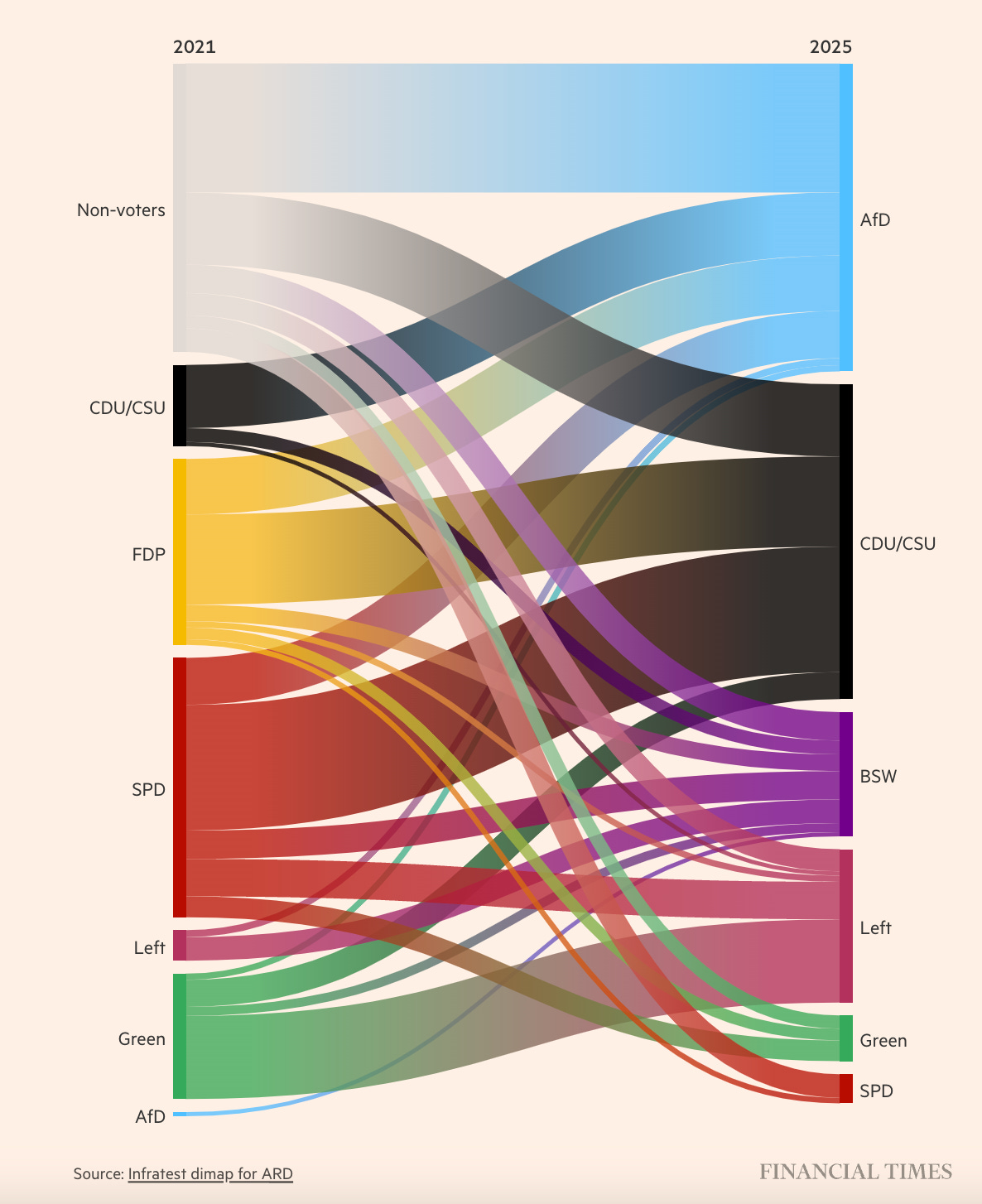
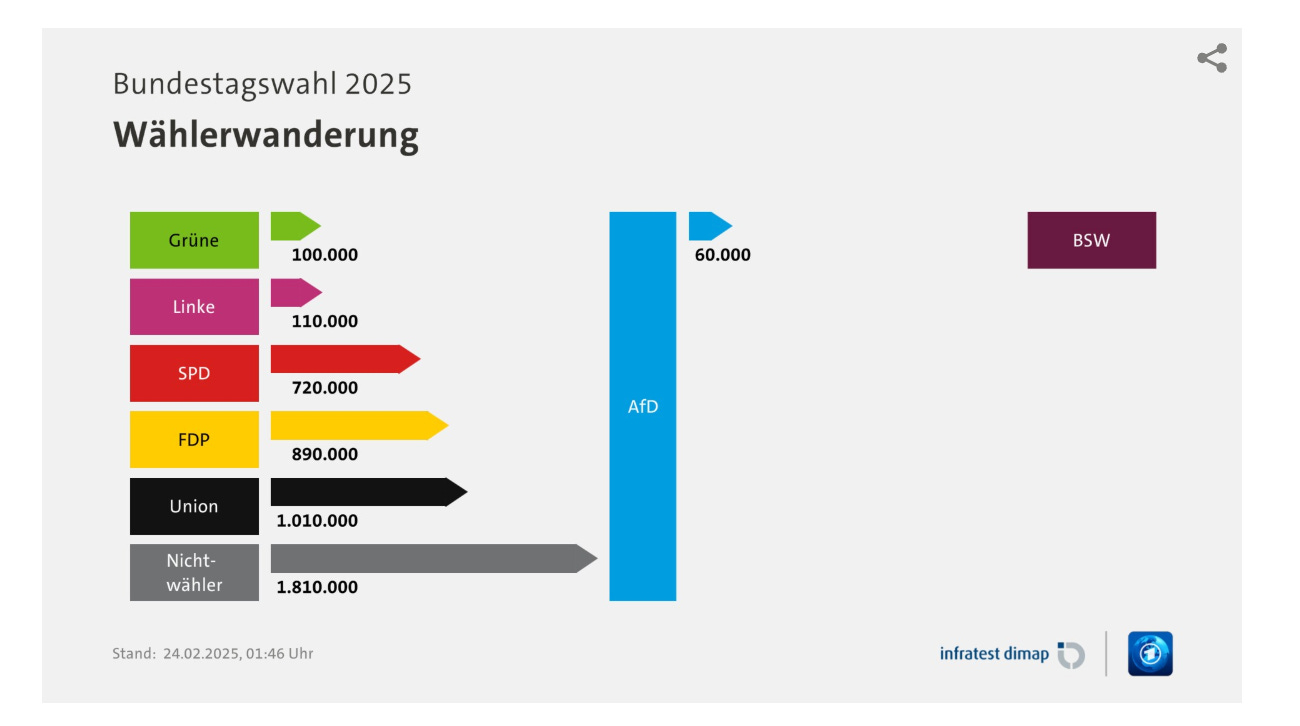
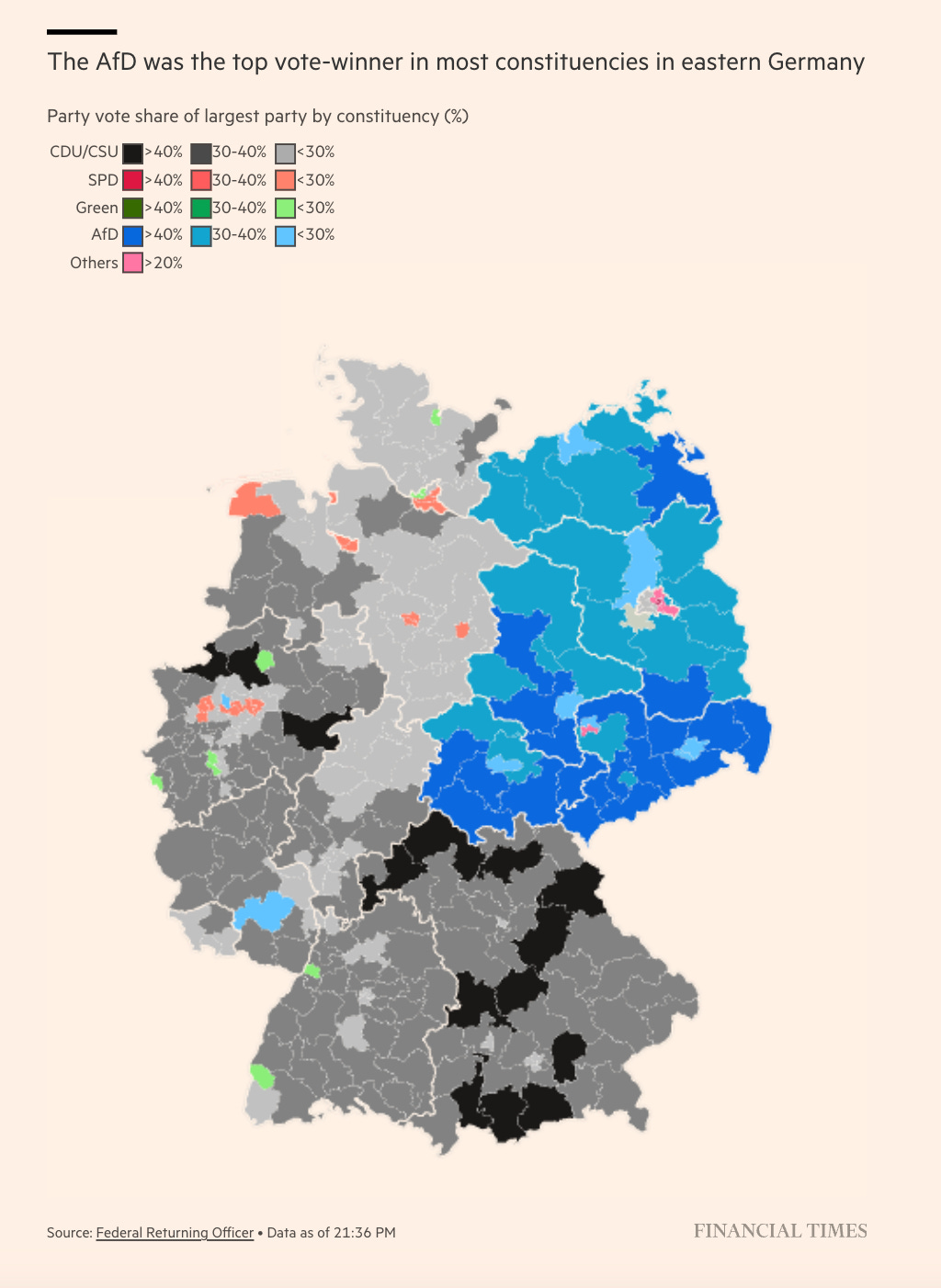
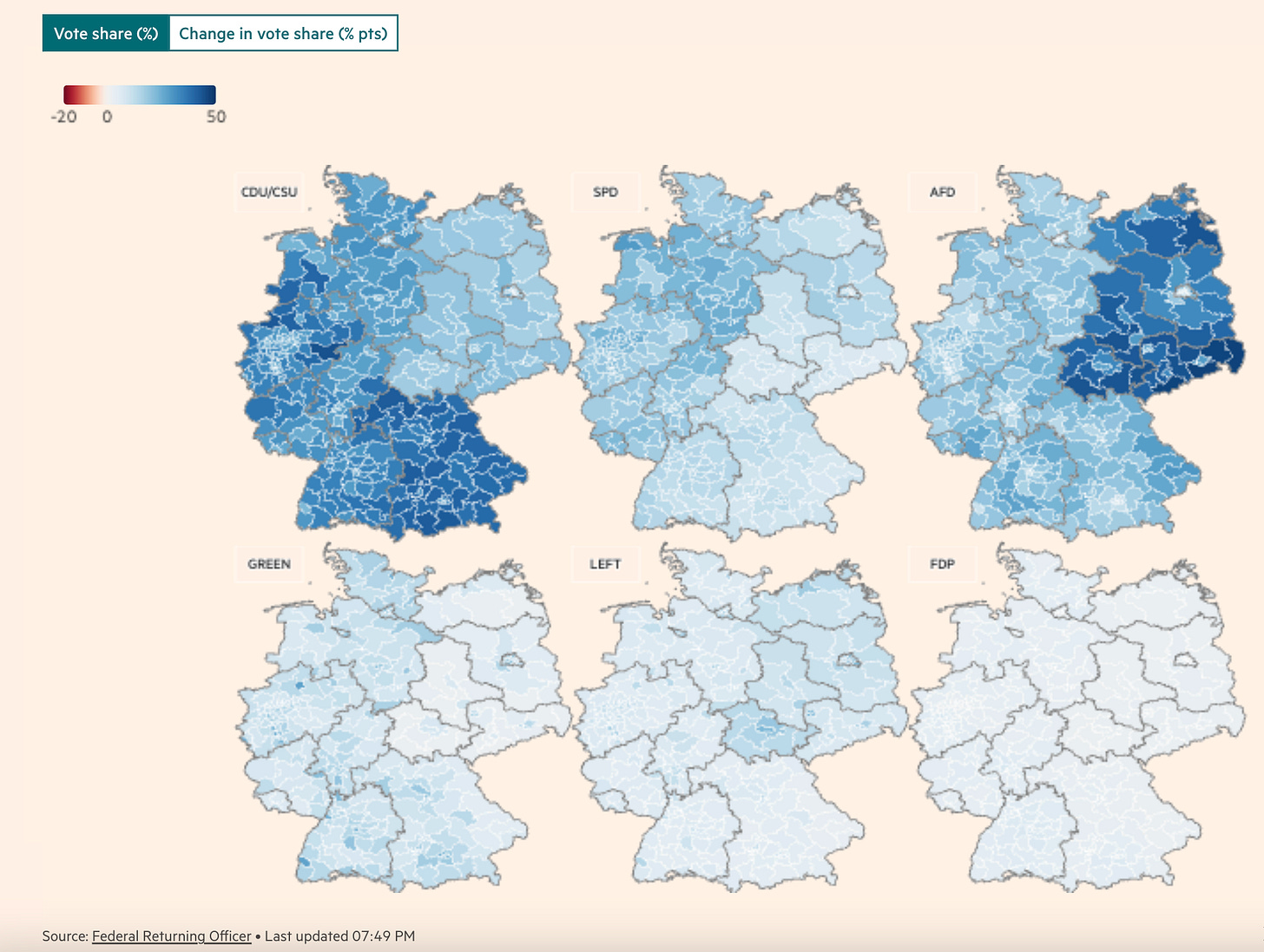
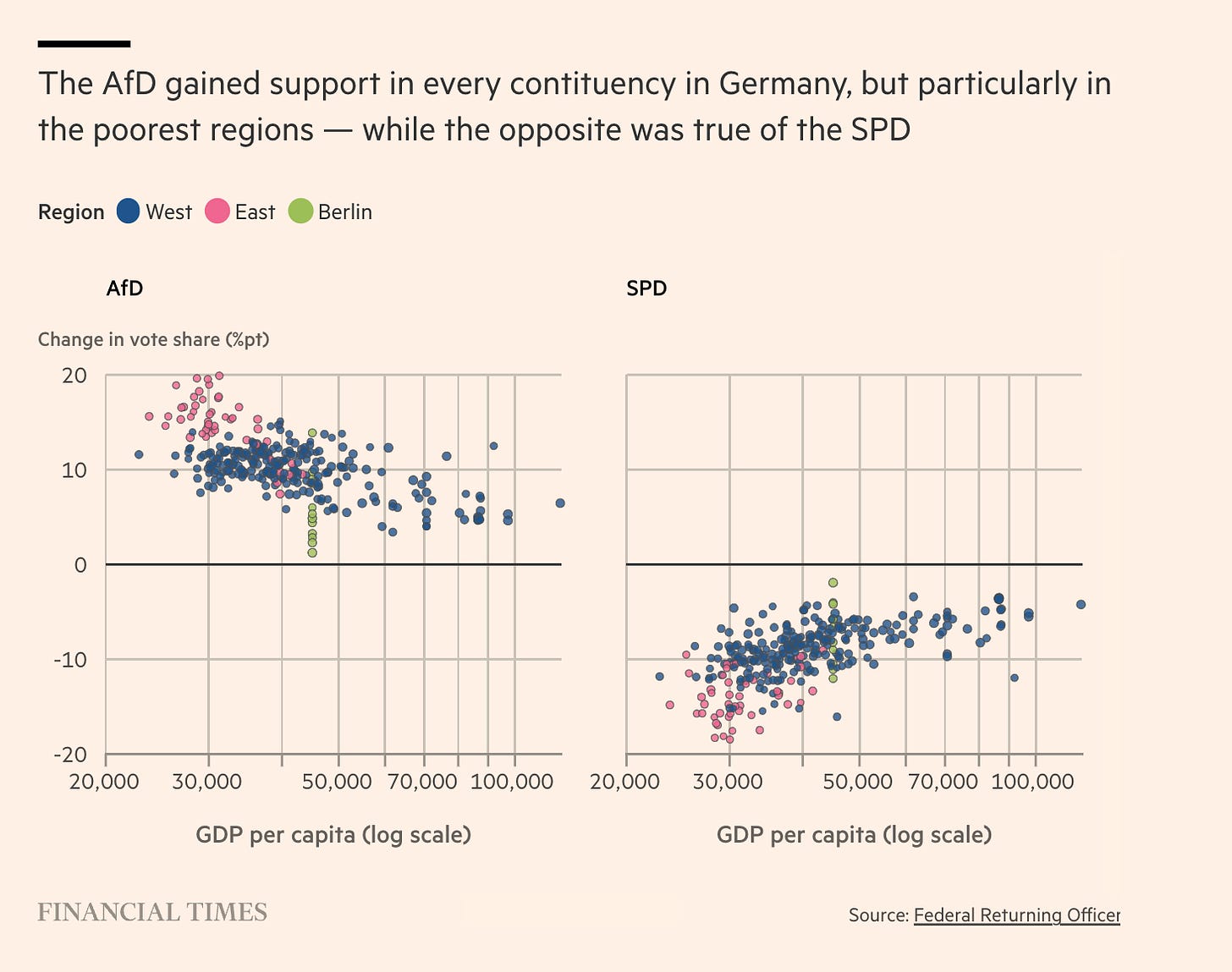
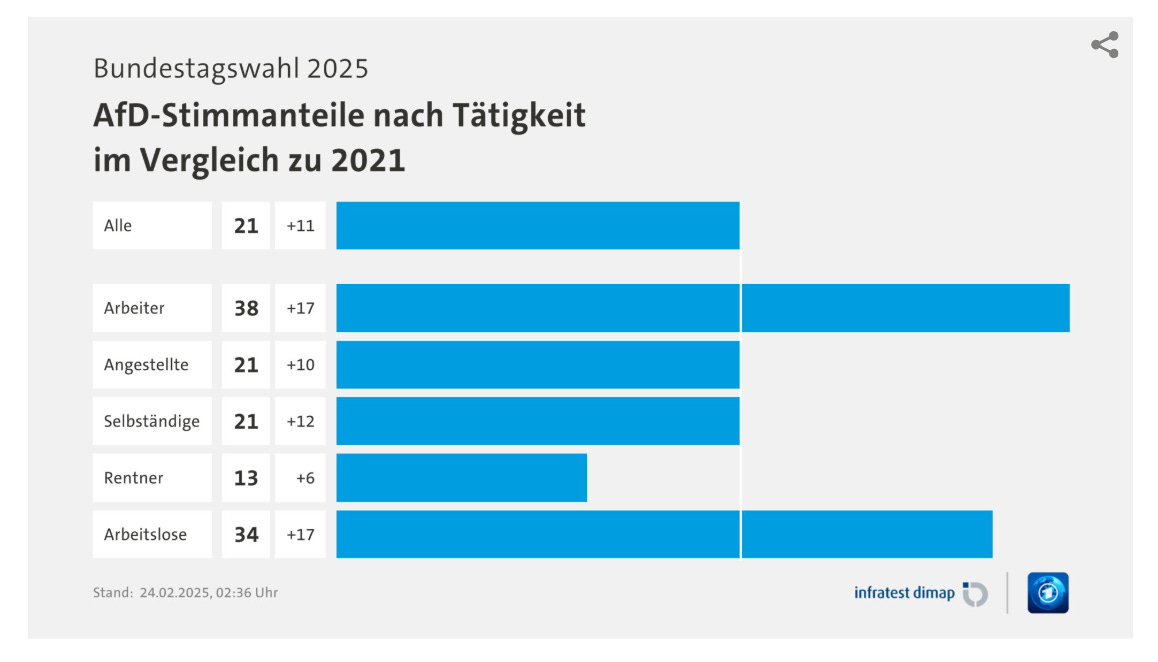
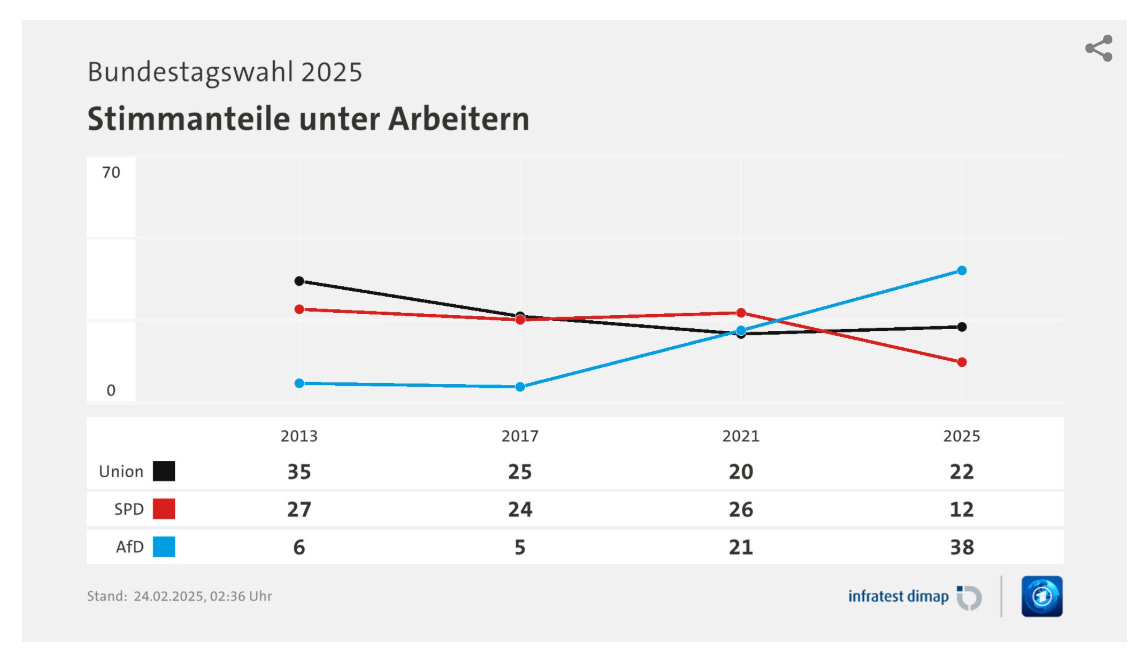

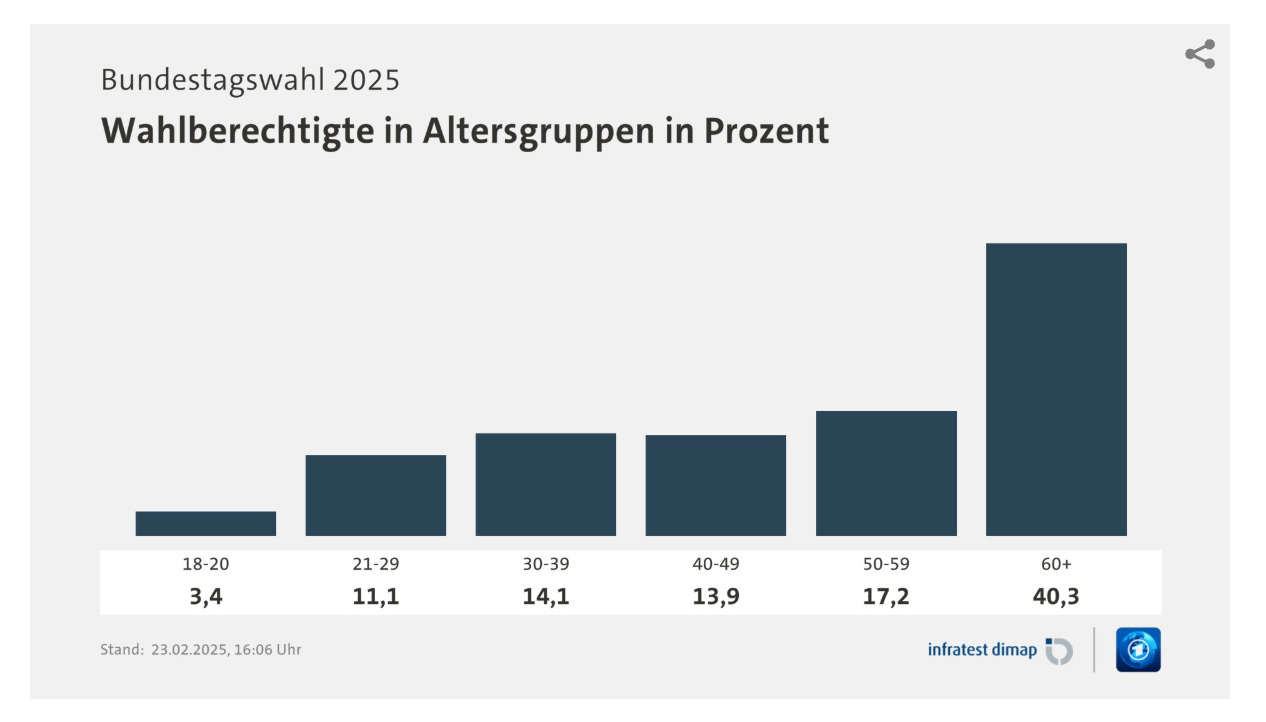
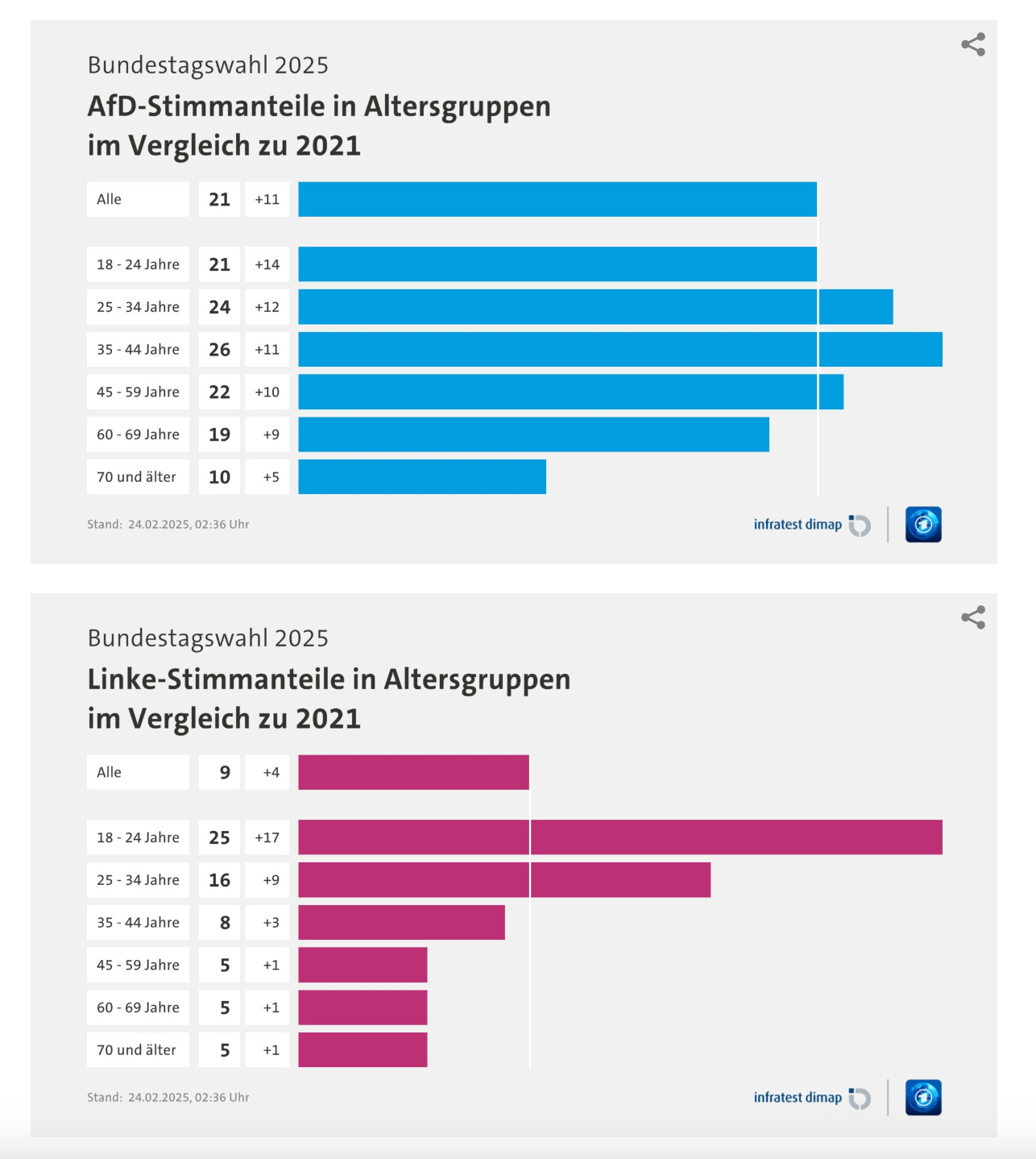
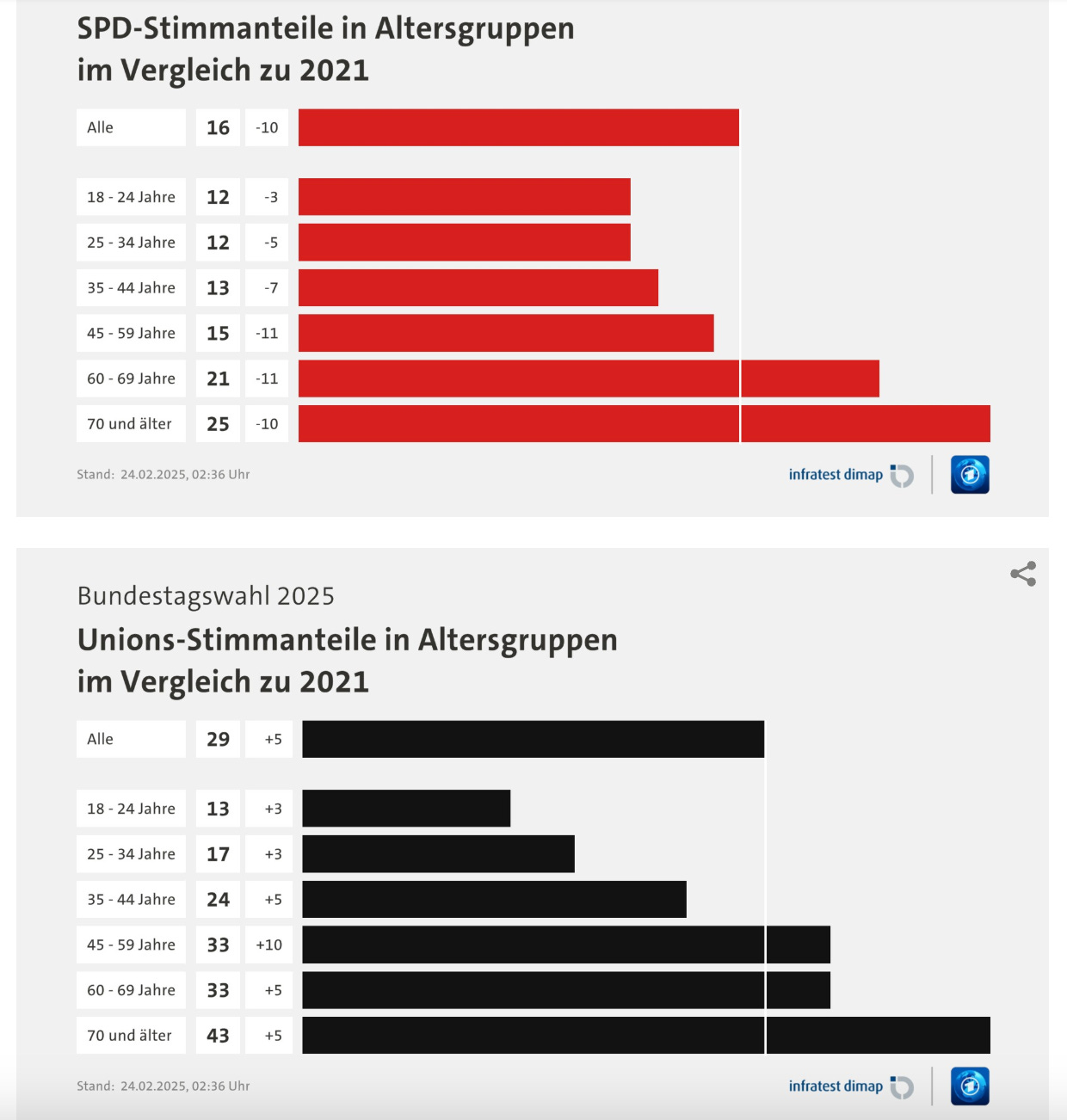
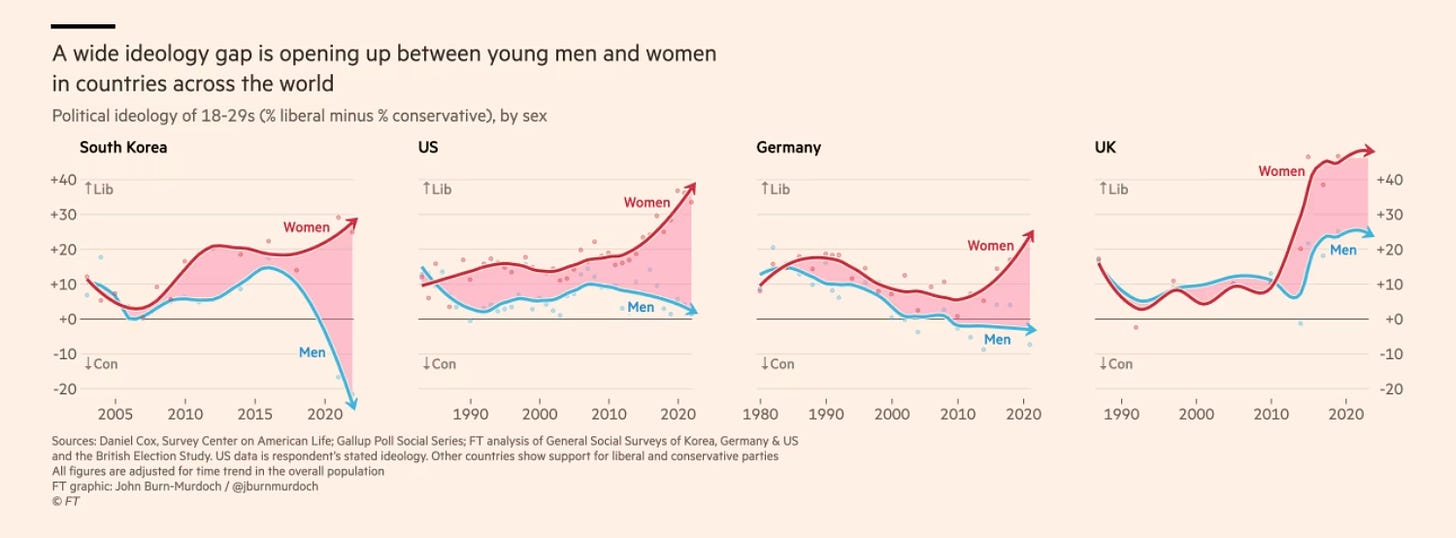
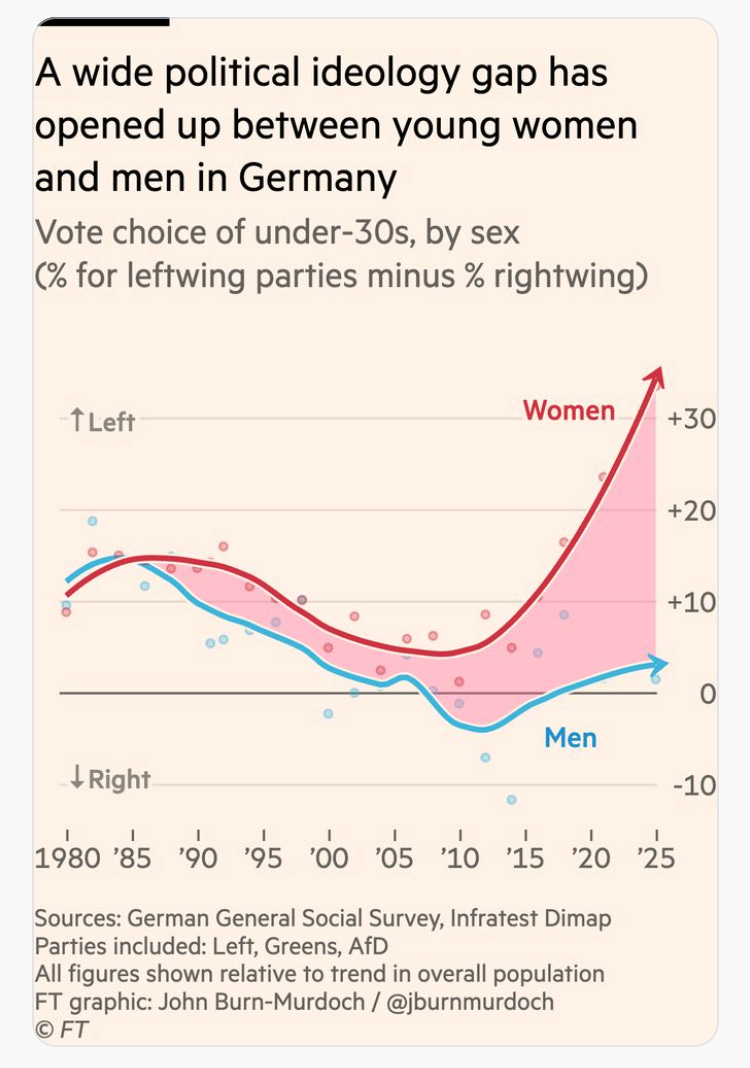
The FT chart with the voter movements looks a bit weird because it seems to leave out the voters who voted the same in both elections. That’s an important factor though
Great article thanks! Better than the explanations on ZDF last night.